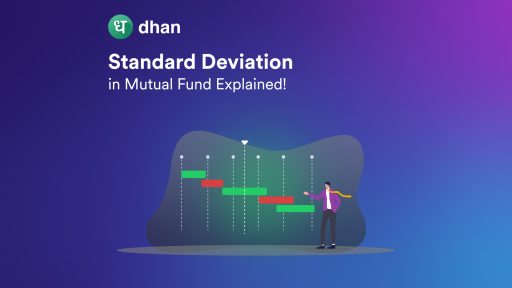If you invest in mutual funds, you might have noticed the term called performance ratios which includes Alpha, Beta, standard deviation, and Sharpe ratio.
All these are nothing but the risk-return ratios that help you analyze the past performance and riskiness of a mutual fund.
Higher returns usually come with higher risk, but if you know how to measure the risk then half of the problem can be solved.
To help you with the same, in this article, you’ll learn the meaning and calculation of Alpha and Beta in mutual funds.
What is Alpha in Mutual Funds?
Alpha is a measure that shows how much return a mutual fund has given as compared to its benchmark index. It simply shows how much return you can earn in a mutual fund over and above the risk-free rate of return.
For example: If the value of an Alpha for a mutual fund is equal to 0, then the mutual fund has given the same return as the benchmark index.
If the value is greater than 0, then the mutual fund has outperformed the index. If it is less than 0 and is negative, then the fund has underperformed as compared to the index.
How to Calculate Alpha in Mutual Funds?
Suppose the X Mutual Fund has given a return of 11% in the last year and the benchmark index NIFTY 100 TRI has given a return of 9%. Also, the risk-free return is 6% and the beta is 0.8.
Formula of Alpha ratio in mutual funds: [(Mutual fund’s return – Risk-free return (Rf)] – [(Benchmark index’s return – Risk-free return (Rf)) X Beta]
- Alpha = (11 – 6) – [(9 – 6) X 0.8)]
2. Alpha = (5) – (2.4)
3. Alpha = 2.6
An alpha of 2.6 means that X mutual fund has given more returns than the index in the same period.
What is Beta in Mutual Funds?
Beta measures the riskiness or volatility of a mutual fund as compared to its benchmark index. It shows how much the mutual fund has reacted to a change in the price of the benchmark index.
For example: If the value of a Beta is equal to 1, then the mutual fund is moving in line with the benchmark index. If the value is greater than 1, then mutual funds have shown greater volatility. If it is less than 1, then the fund has shown less volatility as compared to the index.
How to Calculate Beta in Mutual Funds?
For example, Y Mutual Fund has given 12% returns in the last two years, and the benchmark index NIFTY 100 TRI has given a return of 10%. Assume, the risk-free rate of return is 5%.
Formula of Beta ratio in mutual funds: [(Mutual fund’s return – Risk-free return (Rf)] / [(Benchmark index’s return – Risk-free return (Rf)]
Beta = (12 – 5) / (10 – 5)
Beta = 1.4
When the benchmark index falls by 1%, then the mutual fund will fall by 1.4%. Also, a 1% rise in the benchmark index means that the Y fund has increased by 1.4%. This shows that the Y mutual fund is more volatile.
Difference Between Alpha and Beta in Mutual Funds
Here are the differences between Alpha and Beta in Mutual Funds:
| Points of Difference | Alpha | Beta |
| Main Idea | Measures the returns of a mutual fund as compared to the benchmark index | Measures the risk of a mutual fund as compared to the benchmark index |
| Baseline Value | Zero | One |
| Significance | Shows the performance of a fund manager in generating returns | Shows the mutual fund response in benchmark’s volatility |
Why are Alpha and Beta in Mutual Funds Important?
Alpha helps you analyze a mutual fund’s ability to generate good returns and how the fund manager is investing in assets to generate extra returns over the benchmark index’s return.
On the other hand, Beta helps you to choose the mutual fund according to your risk appetite. If you are a risk-averse investor and want to earn consistent returns, then you can choose a fund that has a Beta of less than 1.
Conclusion
Alpha and beta in mutual funds are the two popular risk measures. Alpha helps in measuring the fund performance as compared to the benchmark index.
Beta calculates how volatile the fund is and how it responds to a change in the price of the benchmark index. By considering both, you can make an informed investment decision.




